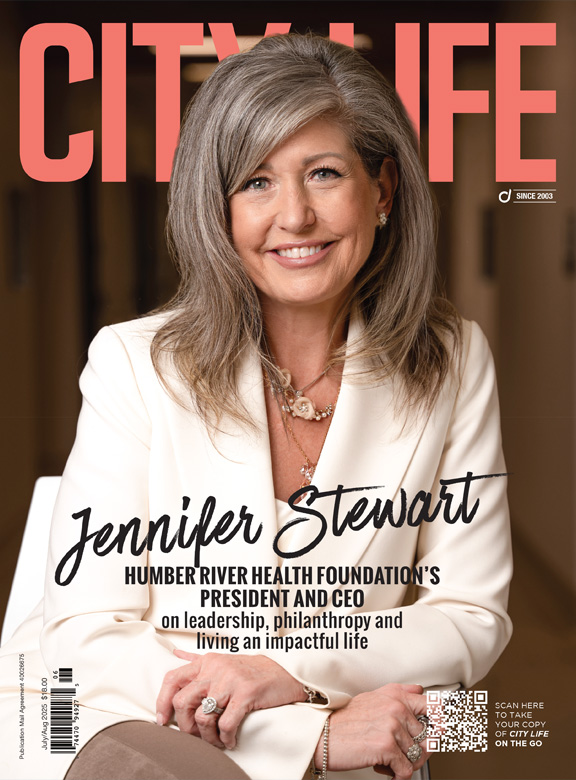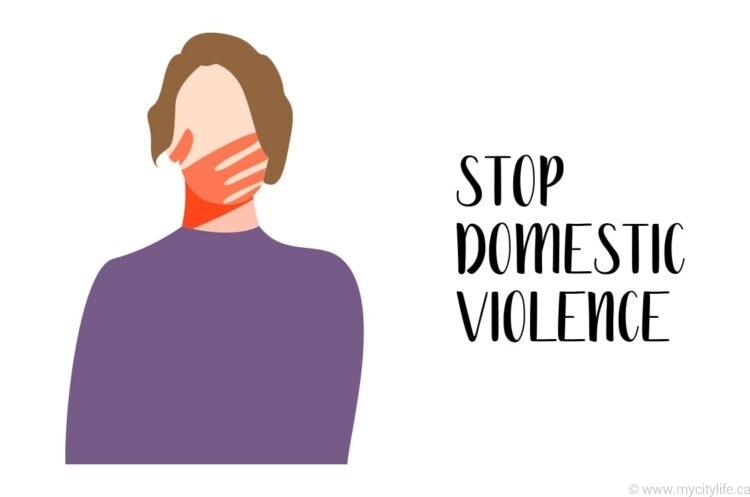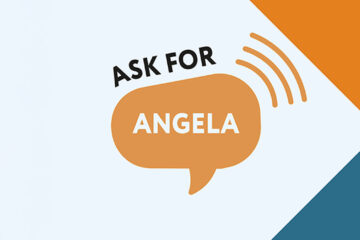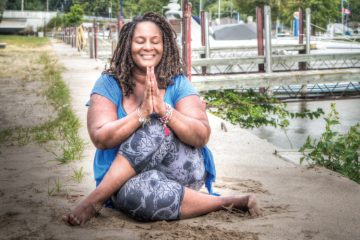Stalking and restraining orders: The standardization of violence against women
Anyone even remotely plugged into significant news events will remember that awful day in December 6 of 1989, when 14 women were murdered at École Polytechnique de Montreal in what has come to be known as the Montreal Massacre. (In addition, 10 other women, as well as four men, were also injured). It is an event that rocked Canadians to their very core and one that is commemorated as the National Day of Remembrance and Action on Violence Against Women.
The perpetrator’s motive?
Misogyny and antifeminism manifested as a societal act of violence against women. The United Nations’ Declaration on the Elimination of Violence Against Women defines the term ‘violence against women’ as: “Any act of gender-based violence that results in, or is likely to result in, physical, sexual or psychological harm or suffering to women, including threats of such acts, coercion or arbitrary deprivation of liberty, whether occurring in public or private life.” 1
The statistics around these gender-based acts of violence are startling. In 2017 in Ontario alone, there were 32 femicides reported. The Canadian Women’s Foundation, The Canadian Women’s Foundation, also posts that every six days, a woman in Canada is killed by her intimate partner. And on any given night in Canada, over 6,000 women and children sleep in shelters because it isn’t safe for them to be at home. In fact, domestic violence accounts for 12 per cent of all violent crime in Canada, which, in turn, incurs 40,000 arrests. The foundation also reports that Indigenous women are killed at a rate of six times that of non-Indigenous women.
On August 26 of 2022, 20-year-old Angelica and her 44-year-old mom, Elvie Sig-Od, were stabbed to death by Angelica’s 46-year-old dad and Elvie’s husband, Godfrey Sig-Od. They are the 5th and 6th victims of femicide in Toronto, last year, alone.
In fact, the indefensible femicide phenomenon is growing at an alarming rate. The Ontario Association of Interval and Transition Houses, (OAITH), state, in their July 2022 monthly report, that a total of 27 femicides have been reported in Ontario since November 26, 2021. 2
“Sadly, there were four victims of confirmed femicide in the month of July in Ontario, alone”, says Tim Smuck, executive director of Changing Ways, which is located in London, Ont., an organization whose primary function is to run court-mandated programs, known as the Partner Assault Response Program, (PAR). “Our agency, alone, supports close to 700 individuals a year. These offenders, (90 per-cent are male), are sent to us to complete a 12-week facilitation program in a group class setting, where we work with them on self-actualization and help them understand their accountability, and their actions, with the end goal of helping them change their ways in order to not re-offend. I understand that there is a lot of stigma around this, but if we don’’t do meaningful intervention work with these men who cause harm, sadly, violence will continue.”
While this type of program is a step in the right direction — the program used to be 16 weeks but has been cut down to 12 weeks due to provincial cuts — it is delusional to think a mere three months, decades of toxic masculine behaviours and deeply–embedded traumas that these men might have suffered as children, will be somehow be cured.
While statistics are important in order to understand and be responsive to the rising escalation of these kinds of hate crimes, it is the actual voice of someone who has been through these kinds of horrific events that becomes the ultimate tool in commuting the unimaginable into reality — the kind of reality that no one wants to envision or believe.
And don’t fool yourself, these acts of female-targeted violence happen in our own backyard. Perpetrators involved in this kind of violence do not necessarily discriminate across particular demographic boundaries. While it might hold true that some segments are more overrepresented than others, the fact remains: The physical acts of violence resulting in femicide are not singular to one race, creed or religion.
On May 2, 1963, in the tiny hamlet of Castleton, Ont., which is located in the County of Northumberland less than two hours from Toronto, Robert Killins, the perpetrator who murdered his former wife, Florence Irene, who was pregnant, his daughter, Pearl Irene, who was also pregnant, his six-year-old daughter, Patricia Elizabeth Anne, who was waiting for the tooth fairy to come for her two front teeth, and his sister, Ada Gladys and her cherished dog, Taffy, was a former United Church Minister and an award-winning scholar from Queen’s University.
In the recently published book, The Castleton Massacre: Survivors’ Stories of the Killins Femicide, (Dundurn Press, July 2022), by Sharon Anne Cook and Margaret Carson, the latter, who was 12 at the time this horrifying incident took place, shares her memories as a survivor of what happened before and leading up to the day several of her female family members were killed by her father, (Robert Killins), whom she refers to only as “the perpetrator”.
Just a year shy of becoming a teenager at the time of the massacre, Carson remembers carrying handwritten notes between her mother, Florence, and her Aunt Ada Gladys, who lived in a house nearby on the shared property.
“I was not told to keep the notes secret but I instinctively knew to not show them to the perpetrator. I would tuck them into my clothes and run over to the house where my aunt was staying, and then I would run back to my place. I believe that I knew that it was something out of the ordinary — why would I be running notes between these two houses that were relatively close together? Children seem to know, if they’ve had violence around them, to stay away.”
Carson remembers her mother as a beautiful woman who was happy, fun, loving, and affectionate. “She loved music, and I remember times when we would get in the car, and she would turn the music up so loud, and we would all sing to whatever was on at the time. She loved dancing and used to play the harmonica but not so much in those later years.”
Typically, Robert isolated Florence, moving the family to shacks across the country, and, even at one point, to an isolated area in British Columbia. “He originally told my mother that there were to be no children in the marriage. He wanted her as the child,” Carson says. “In fact, there were no children for six years.”
The situation took a deadly turn when Florence gathered the courage to leave Robert, which, in that day and age, took a lot of mettle and determination. Reflecting back on that timeframe with the niece of the perpetrator, Sharon Anne Cook, who is the co-author of The Castleton Massacre, (and whose family, in fact, were the ones who took young Carson and her brother in after the murders), the two women recognized in the ‘perpetrator’s’ behaviour, the eight steps that Professor Jane Monckton-Smith identifies as escalation stages to the fatal ending of the female partner, the gender most represented in the majority of homicide cases.
In the April 27, 2022, Rapid-Fire Conference on Behavioural Science training session, video of Conference, Professor Jane Monckton-Smith identified the 8 Stages to Domestic Homicide, which she also outlines in her book: In Control: Dangerous Relationships and How They End in Murder (Bloomsbury Publishing, 2021).
These include the fact that the perpetrator usually has a history of certain behaviours, such as being controlling, possessive and jealous. And, while a perpetrator may not have a criminal record, they can be skilled at hiding their violent nature, presenting a charming affable personality in public while being cruel, violent and demeaning in a private setting.
The second stage reflects the speed in which a new relationship progresses, with the controlling person pressing ahead to get a commitment from their new partner, one that can’t be withdrawn. At this stage, the person becomes like a possession to the perpetrator.
The third stage is dominated by jealously and control of the relationship, with the perpetrator controlling the partner’s friends, their comings and goings, and even the clothing a partner is ‘allowed’ to wear.
The fourth stage is identified as the trigger stage, whereby the control of the controlling person over their victim, their children and their family relationships is being challenged. The single biggest trigger for homicide, (femicide), is separation or even the threat of separation as the perpetrator’s control is being taken away.
The response to the trigger (or challenge) manifests as stage five. It is at this point that the escalation begins as the controlling person attempts to regain control by becoming more possessive or violent.
Professor Monckton-Smith states that relationships can get stuck in the circle of controlling the relationship, ending it, and then reinstating it, which ignites the cyclical repeating of triggering and escalation over and over again. The most concerning aspect of stage five, she says, is that the relationship progresses forward to stage six, which is highly dangerous for the victim in the partnership.
In stage six, the relationship becomes irretrievable, but rather than move on and accept this fact, the perpetrator’s mindset is such that he may decide to resolve his feelings of rejection and humiliation by stalking his (former) partner as a form of punishing her, or at the extreme end, by murdering her.
Sometimes, the fear of stalking and the ongoing punishment and control by the perpetrator are successful, and the relationship is reinstated, at which point, Monckton-Smith says, the relationship circles back to stage three. At some point, however; it is possible that there may be an acceptance that the relationship has ended, at which point the controlling partner reverts back to stage one in order to launch a new relationship.
Stage seven is identified as the planning stage whereby the perpetrator conducts his research on how to kill his partner.
Stage eight is the actual act of homicide/femicide, which Monckton-Smith says, at the aforementioned April 27, 2022, conference, does not have to be inevitable. “These things can be stopped,” she states. “Most cases will not get to stage eight, but we need to keep vigilant.”
With the incidents of femicides on the rise, what are some of the contributing factors that can be identified and hopefully defused in order to put some context and strategy around defusing these kinds of situations?
In astonishingly hard-to-believe newspaper articles at the time of the Castleton murders, authors Cook and Carson state in their book that these publications identified the triggers that ignited Robert Killins’ murder spree as: “Diabetes that was “’out of control’”, a gangrenous leg, and “‘ill health for years’”. (Page 173). Some 60 years later and the ubiquitous rise of mass communication platforms happens, the demand for more salient reasons unequivocally need to prevail.
“Sometimes, when I am sitting in a court room, I hear that the issue centres around the relationship. But, these are not relationship issues. It is about the tactics being used by men to gain and maintain power and control over women,” states Megan Walker, a board member on the London Police Services (LPS) Board. “I also hear in the courts that the perpetrator has mental health issues — that he is depressed. But it’s not about that either because these very same men whose behaviours are being justified by the courts as mental health issues operate perfectly normally in their workplace. They don’t abuse anybody at work, they don’t abuse the grocery store clerk. If they are at home with their partner and abusing her, when there’s a knock on the door, for instance, maybe the police have shown up, these same men can put on their normal faces and go to the door and say, ‘“Oh no, no, no, everything’s fine. We were moving furniture, and a lamp fell over”. While none of their own personal possessions got broken, specific items belonging to their female partners do. So again, these types of incidents are not about mental health — that is a fallacy. And it is not about alcohol abuse or drug abuse; these situations are specifically targeted at women.”
Walker does not buy into the excuse that men abusing women stems from anger. If that were the case, she says they would be angry at everyone. Instead, they keep their erratic behaviours compartmentalized until they are home with their partners. “It is really about male entitlement and their need to gain and maintain power and control over the women in their lives. And when the woman is no longer impacted by the yelling and screaming, her partner might change his tactics and begin isolating at home, cutting her off from her friends and family. And from there, he may start physically or sexually assaulting her. There are any number of tactics that are consistent with men as they broaden their control. Ultimately, that is what these situations are all about, power and control.”
Addressing male violence against women is a priority for the London Police Services Board. In September of 2022, members of the Board approved a recommendation that femicide be defined in the Criminal Code of Canada. Subsequently, a letter was sent to the Prime Minister, Deputy Prime Minister, Attorney General of Canada and Minister of Women and Gender Equality requesting a meeting be held with members of the London Police Services Board, femicide experts and members of the black, Indigenous and people of colour communities.
Smuck is worried about what he sees as the public rise of violent acts towards women, the rise of men’s rights movements and institutional patriarchy that furthers the unworthiness of women. “How many times and how many places do we have to see situations, such as that of the four women who were murdered in this province in July, alone? Society as a whole, and men in particular, have to make this hyper-misogynist, hyper-male-dominated society accountable for their actions,” Smuck says. “The other thing that we need to talk about as a society is the trauma surrounding these male offenders. Many of them have grown up in situations where their fathers and their father’s fathers have perpetrated these violent acts against women, which is no excuse by any means. In our work, we always hold the men we work with accountable first and foremost because they made their choices, and they have to be accountable for them. And as a part of this, we need to understand the root of why these men are making these choices. If we don’t understand the deep-rooted patriarchy, if we don’’t understand the deep-rootedness of where their actions and their trauma is coming from, then there is not going to be any changes in their behaviour. We also have to hold these men accountable for their actions, and we need our criminal justice system to do that. We’re seeing a lot of guys get off with acts that are both risky and dangerous. Strangulation is something we always talk about, and when we see it documented as a criminal charge, we consider it a high-risk situation. In fact, in a lot of the death reports, strangulation is often stated as the cause of death. So again, we need to understand all of the contributing factors that lead to the escalation of violence, better. Importantly, we cannot talk about this subject without acknowledging the rampant rise of men’s rights movements that are resurfacing, a situation which is very scary. We need to create more prevention intervention and safer spaces for men to come together and talk openly about this issue.”
How do women — often times confident and accomplished women — arrive at a level that is so completely contrary to their very being? And, can they cling to the hope that they might be able to free themselves given the right tools, circumstances and outside support?
One of the trickier facts that women need to be aware of is that this kind of abuse and manipulation is not singularly tied into a ‘certain’ type of man, or situation. Yes, abuse happens where there is homelessness, poverty and addiction, but by no means should any woman think that they are safe with a well-heeled, successful businessman.
“Wealthier individuals have the ability to hire lawyers that do everything they can to either get them out of the situation or get them into what I call ‘more specialized therapy’,” Smuck says. “These offenders get themselves into private therapy and private groups right away, so that, by the time they get to court, they can show the judge that they have already done the work, and their charges should be dropped. They have the financial resources to navigate the court system in an entirely different way. This is a whole other discussion, one that is rooted in a class-based system. Wealthy men in particular will navigate the system in a way that facilitates their charges going away simply because they are able to get into specialized supports that the courts recognize. The charges are dropped, and the offenders are free to move on.”
Of ongoing concern is the women who return to their abusive husbands after leaving the home, often times with their children in tow. During COVID-19, many women became isolated, with both their abuser and them at home. Seeking outside help became an issue bigger than it ever was before, not only around women’s freedom but also financially in instances when one of the partners suffered a job loss with incurred financial restraints.
“I think it’s really difficult for women to access services, particularly shelters across Canada, and the reason for that is because they are underfunded. Women often are often told when they get to a shelter that there is no room for them. Therefore, women end up with no alternatives, but to stay home with their abusers,” Walker says. “I also think that acts of violence have become normalized in our society, particularly violence against women. It happens with such increased frequency that people no longer pay attention to it unless they’’re in a community that highlights the issue”.
Toronto’s Ernestine’s Women’s Shelter, Ernestine’s Women’s Shelter, also reports that women return to abusive situations for other reasons, which could include her partner saying he will change and the woman feeling that she has no other choice because of the lack of affordable housing. There are times too when the perpetrator will threaten to hurt himself, and, in some cases, by threatening to commit suicide.
Harmy Mendoza, who is the executive director of the Woman Abuse Council of Toronto, (WomanACT), states that she firmly believes that femicide can be prevented, but that each and every one of us, across all communities, needs to be a part of the solution. “Based on media reports, in 2020, there were 35 femicides in Ontario, alone. This number increased to 54 femicides in 2021.”
There is an increased risk of both spousal and family violence, familicide, (which is the killing of multiple close family members in rapid succession), to Indigenous and immigrant women. “In the case of immigrant women, the language barrier may be an added challenge, one that begets isolation, and isolation is a good partner with intimate partner violence. It is important that each one of us is aware and knows how to respond to a disclosure of violence and how to access experts’ help and support. There are often a number of red flags, and it is rare when no one sees anything. – Usually family members, colleagues and/or friends witness events that are of concern.”
Education around this topic is important, and it is a disservice to everyone when, as a society, we shamefully sweep the issue of domestic violence against women under the rug. Young people should be taught the parameters around the values and interactions of healthy relationships, and that they should never give up their power or allow themselves to be controlled by another person. Physical, or psychological violence should never be justified, and there is no shame in asking for help.
“We need to make sure that we talk about violence,” Mendoza says. “Violence is rooted in gender inequality”. But, no matter how many steps forward we seem to be taking as a society, at the drop of a dime, targeted violence against women continues to explode.
Cases in point: On September 16, 2022, Mahsa Amini, a 22-year-old Iranian woman was taken into custody by the infamous morality police, known as the Guidance Police or Gasht-e Ershad, an Islamic religious police force established in 2005, to enforce strict dress codes for Iranian women, including the obsessive-to-detail proper wearing of the mandated headscarf. Allegedly, after Amini was taken into custody she suffered heart problems, collapsed at the police station, and later died in hospital after being in a coma for three days.
Closer to home, on September 19, 2022, a woman was fatally stabbed inside a Mississauga, Ont., Canadian Tire store by a male perpetrator. Although the police would not comment on the relationship between the two people involved, the fact that the police believed it was an ‘isolated incident’ speaks loud and clear as to exactly what went on that fatal Monday evening.
“We all need to know what to do and how to respond to these kinds of situations. Learn the best way to respond when you see someone you think is being abused. You may be saving a life,” Mendoza says. Mendoza does however stress that, while being proactive and offering personal support to women in danger, personal safety must trump everything else.
At the end of the day, one of the key reasons as to why women in violent domestic situations do not come forward to ask for help drills down to one essential fact.
“The victim feels guilty, and, when the victim feels guilty, it takes a long time to reconcile that it’s not their fault. And it takes a long time to gain back their own power,” Margaret Carson states. “As a surviving child victim, I have tremendous guilt around not having being able to prevent the murders in some way. It has taken me a lifetime to reconcile these feelings and gain the power to let go of my feelings of guilt.”
If you are in danger, or want help, The Assaulted Women’s Help Line is open 24 hours a day, 7 days a week at 1-866-863-0511.
References:
1. United Nations, Declaration on the Elimination of Violence Against Women, 1993, Article 1, Paragraph 1 ohchr.org
2. oaith.ca

















































































